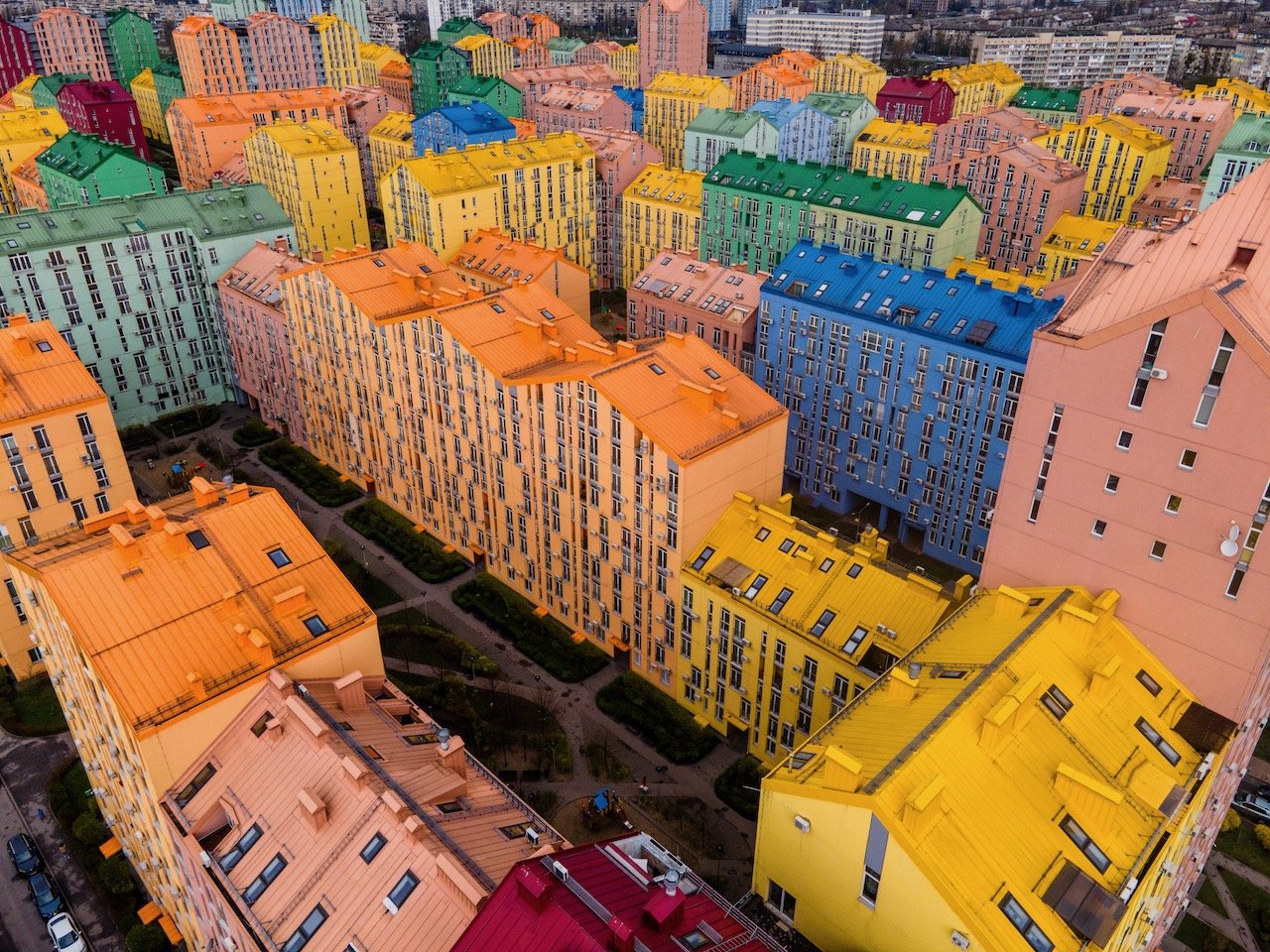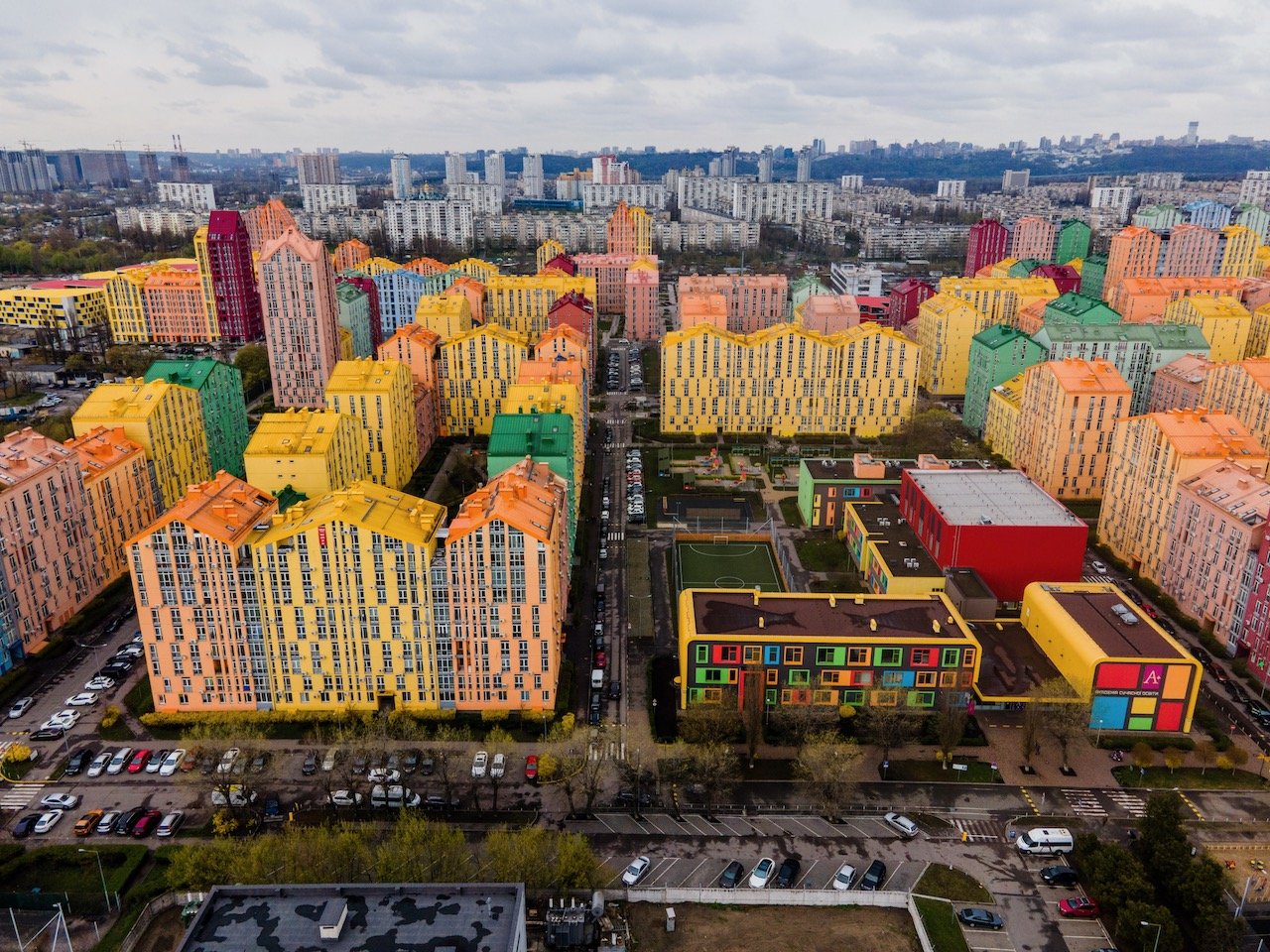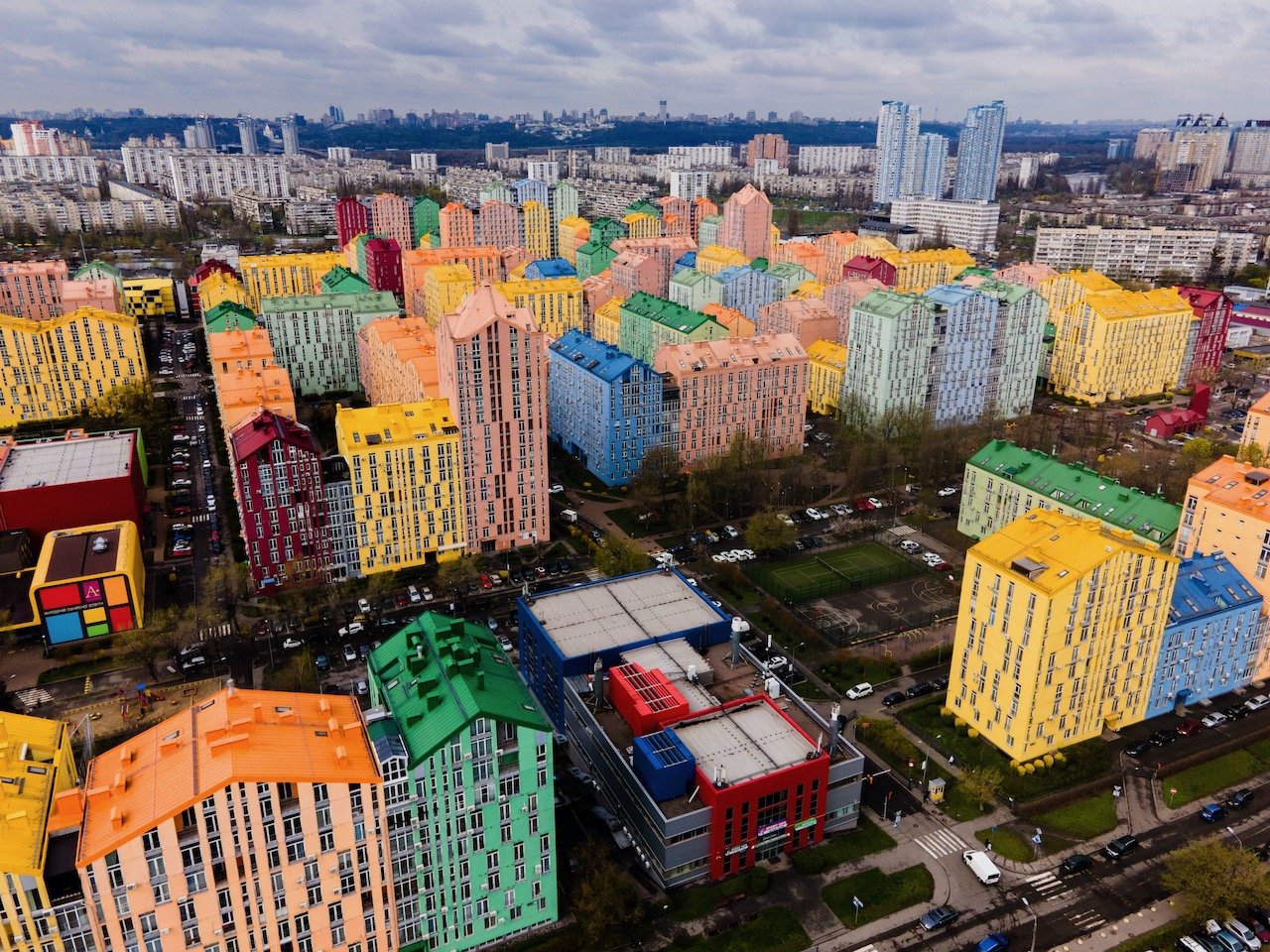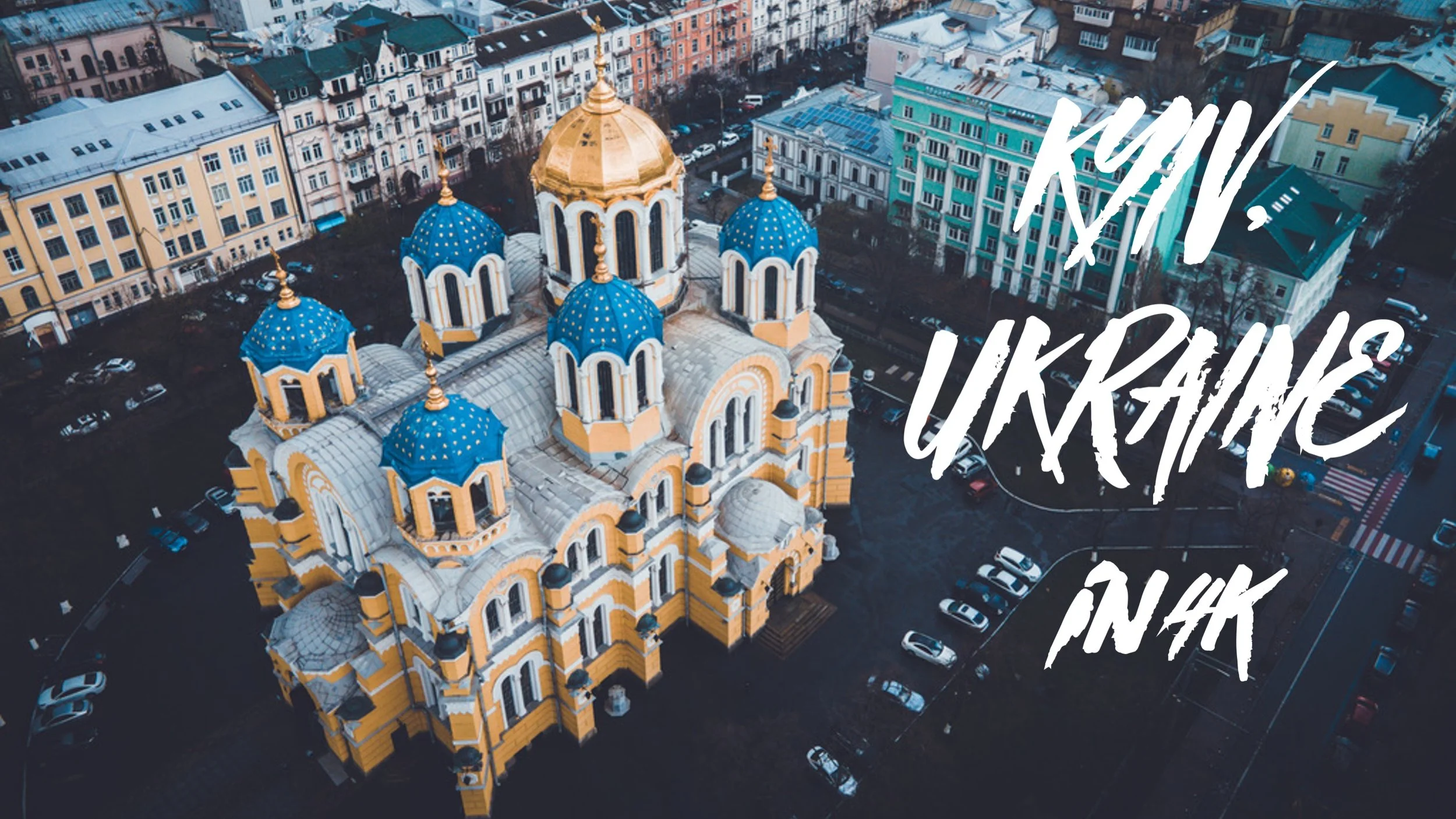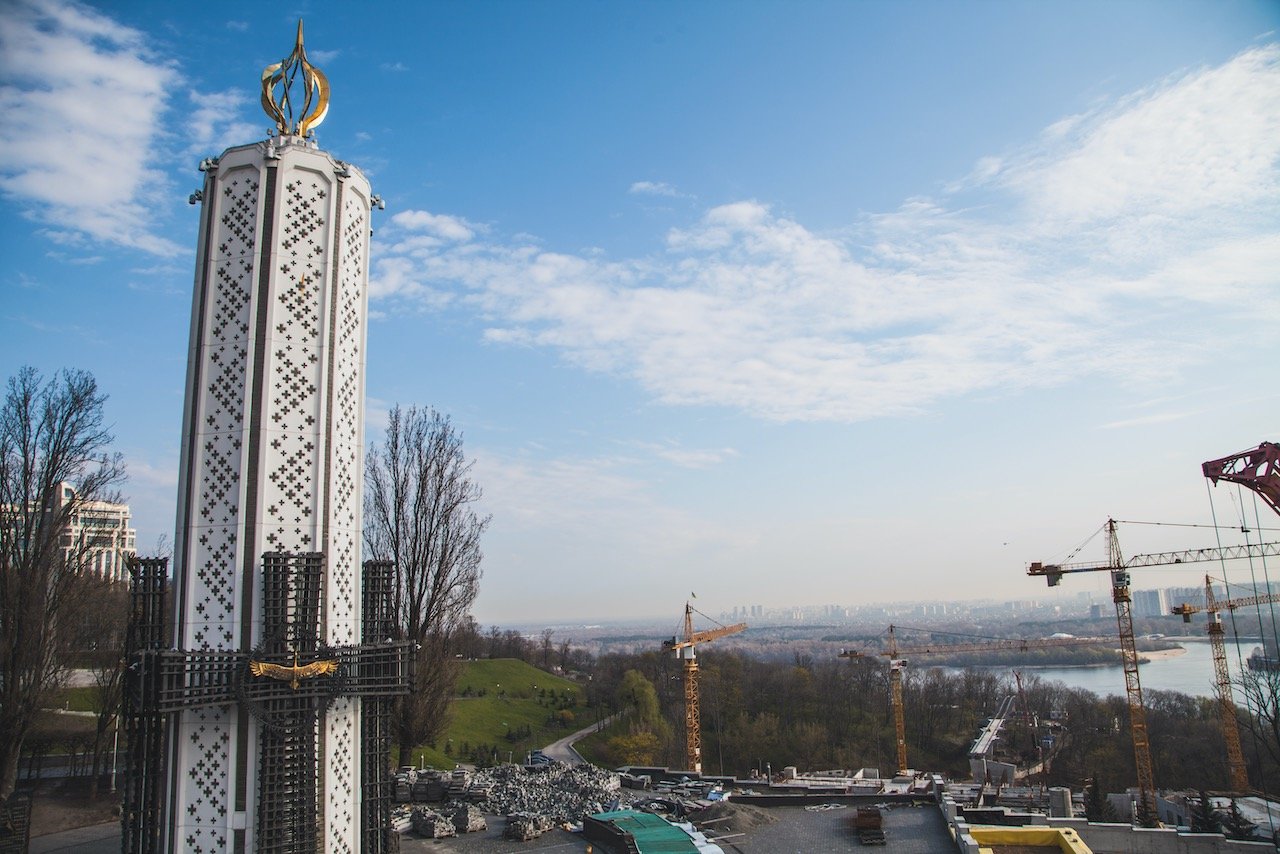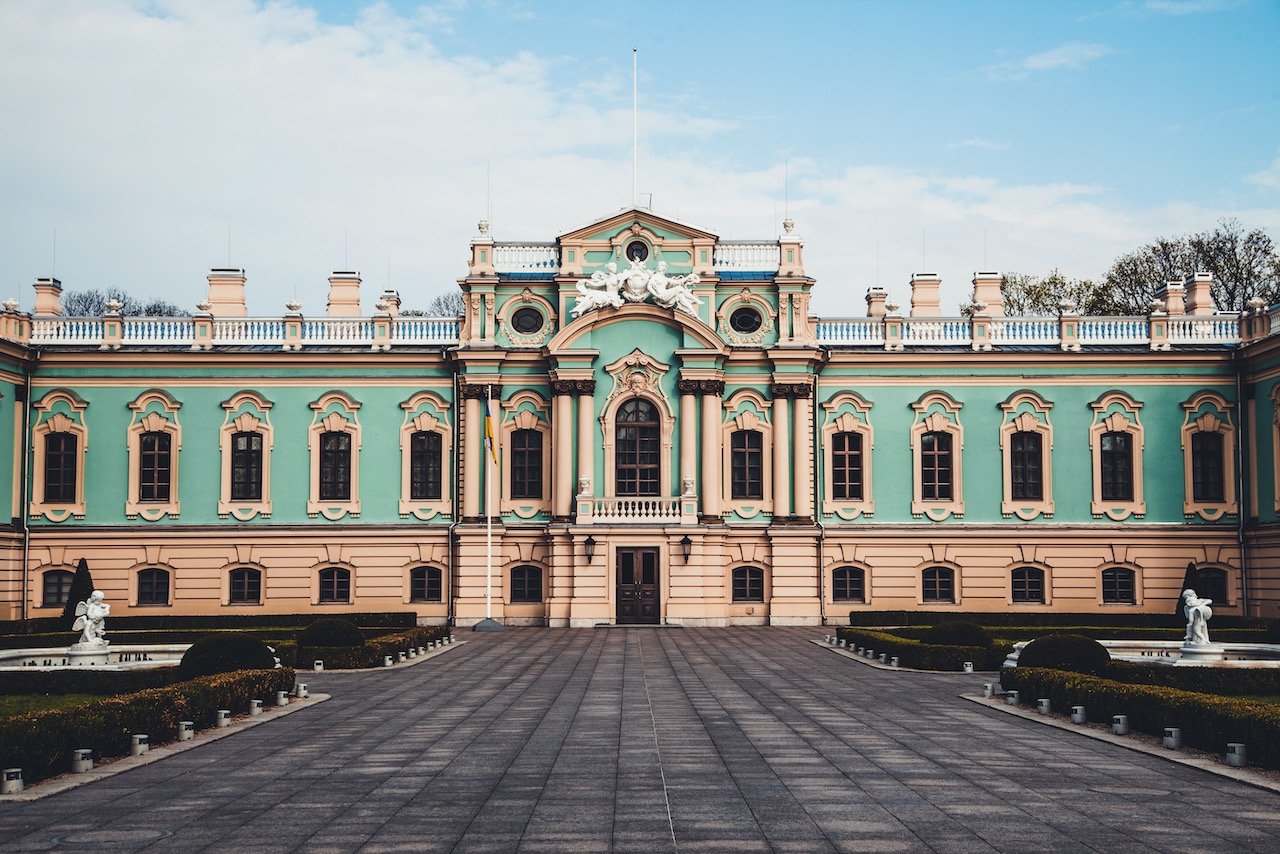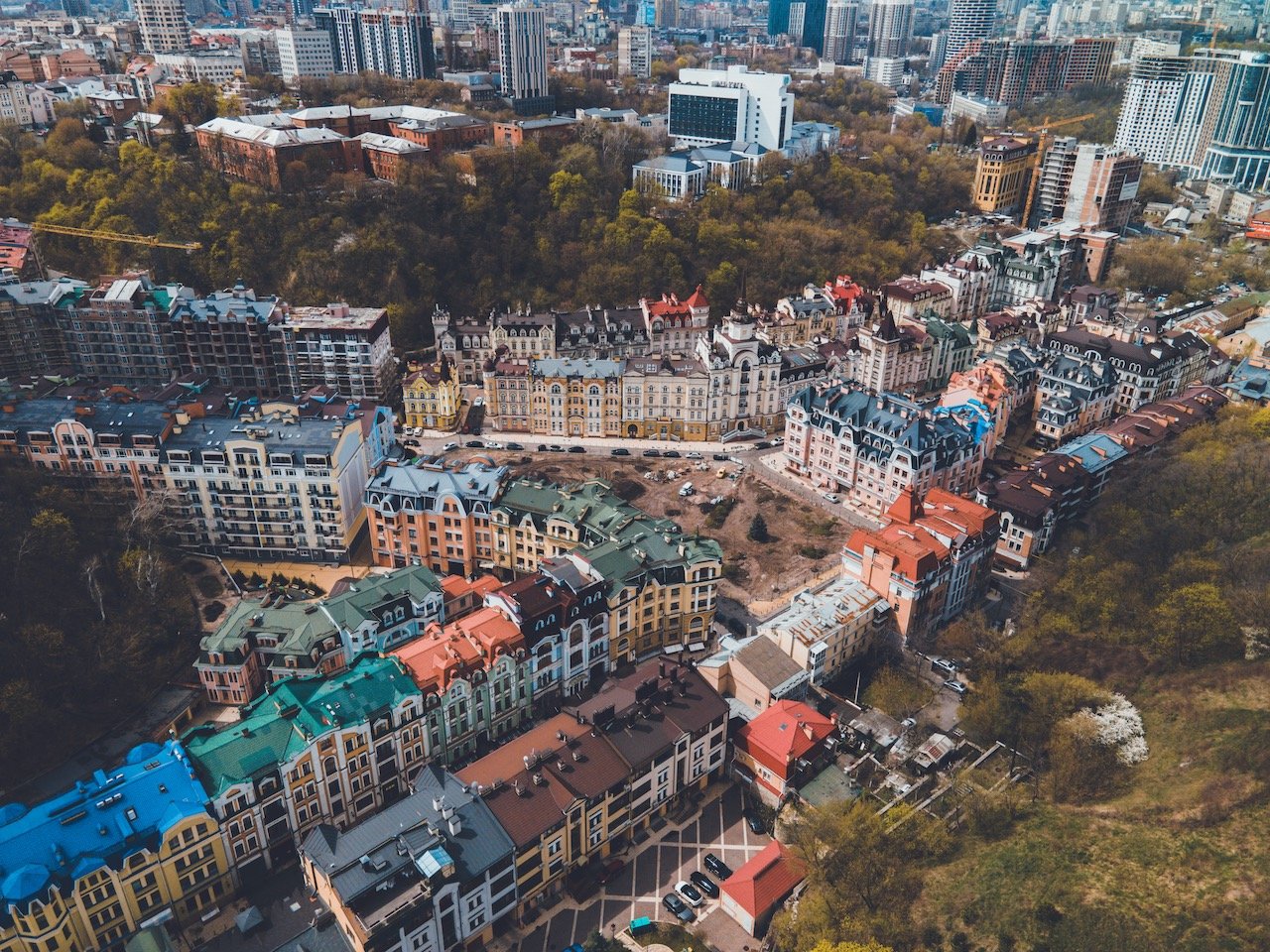A guide to the must see places in Kyiv, Ukraine
(Some links in this post are affiliate links. If you click through and take action, I'll be compensated.) If you are also interested in any PRINTS from any of my posts, be sure to check out my store where you can buy prints as posters, in metal/wooden frames or on canvas.
There has always been a general curiousness I had about Ukrainians and Ukraine as a whole. I had met a few Ukranian people abroad and always found them to be particularly friendly. So naturally, I wondered if Ukraine as a country was a place I should visit. On a long weekend trip, I decided to head on over to Kiev (or Kyiv) to see what the capital was like.
As the 7th most populous city in Europe, Kiev’s beginnings date back to the 5th century AD. Ukraine gained independence from Russia in 1917 but was still under the control of the Soviet Union until its collapse in 1991. Kiev was nearly decimated during WWII but quickly recovered in the years that followed.
The current political climate of Ukraine is complicated by Western vs. Russian interests, including the annexation of Crimea and a desire from tighter integration with the EU and NATO. Despite this climate, I felt safe in Kiev and was really drawn to its more recent history. There seems to be great pride in this country for what they have endured and I liked seeing it through their countless monuments, memorials, and culture.
My flight into Ukraine had me arriving at Boryspil International Airport (KBP), the busiest in the country and about 30-45 minutes away from the city center by car. You also have the option of flying into the much closer Kyiv International Airport (Zhuliany) (IEV), which you can reach the city center from in 5-10 minutes. An UBER from KBP cost me only $10, an excellent deal and a sign of just how cheap my stay here would be.
Check out my drone video of Kyiv, Ukraine below!
A few things I came to notice almost IMMEDIATELY upon arriving in Ukraine:
the traffic is horrendous, especially during rush hour
Ukrainians on the outside seem intimidating, but in nearly all of my interactions with them, were helpful and kind
Kiev is a very cheap destination
Kiev is massive, old, colorful, colorless, hilly, strange, cool, [enter adjective here]…
There are so many gold-domed churches, each of which is worth seeing
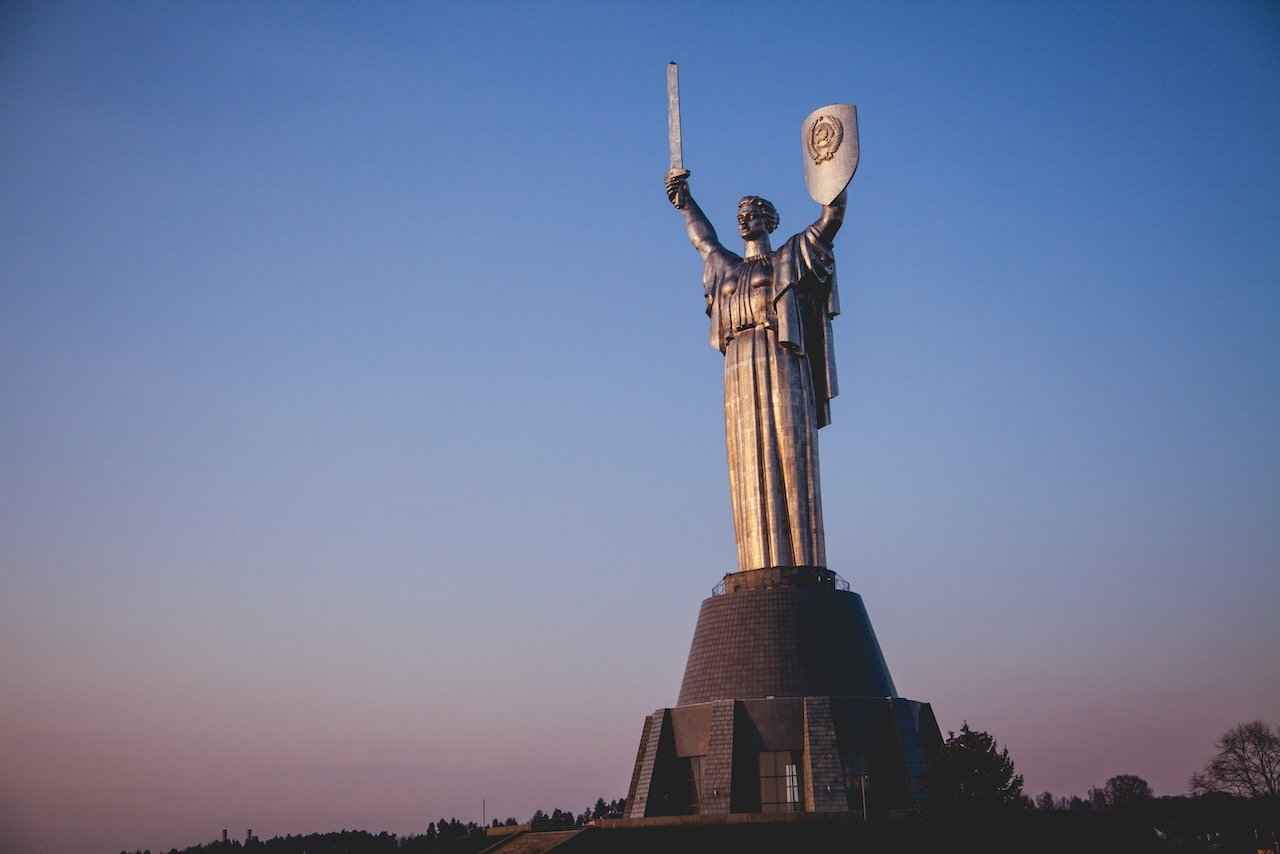

My first sunrise in Kiev took me to the amazing Motherland Monument. This stainless steel monument is situated near the bank of the Dnieper River and stands 62 meters tall with the statue holding a sword in one hand and a shield with the emblem of the Soviet Union in the other.
Also just nearby is the monument the ‘Crossing of the Dnieper’, which commemorates the 1943 Battle of the Dnieper. The monument portrays soldiers crossing the river, conducting assaults on the Western bank. The Dnieper river was part of a 1,400 kilometer Eastern Front in WWII, and involved nearly 4 million soldiers. Over the course of 4 months, Russian soldiers managed to wrestle back control of the area from the German army. This eventually led to the liberation of Kiev some time after.
Interestingly enough, the museum located here as well, called the National Museum of the History of Ukraine in the Second World War, was originally called Museum of the Great Patriotic War, but was changed in 2015 following a ban on Nazi and Communist propaganda. The museum is one of the largest in Ukraine and is visited by 21 million people (give or take) a year. The grounds around the museum WWII military equipment (think tanks and planes)
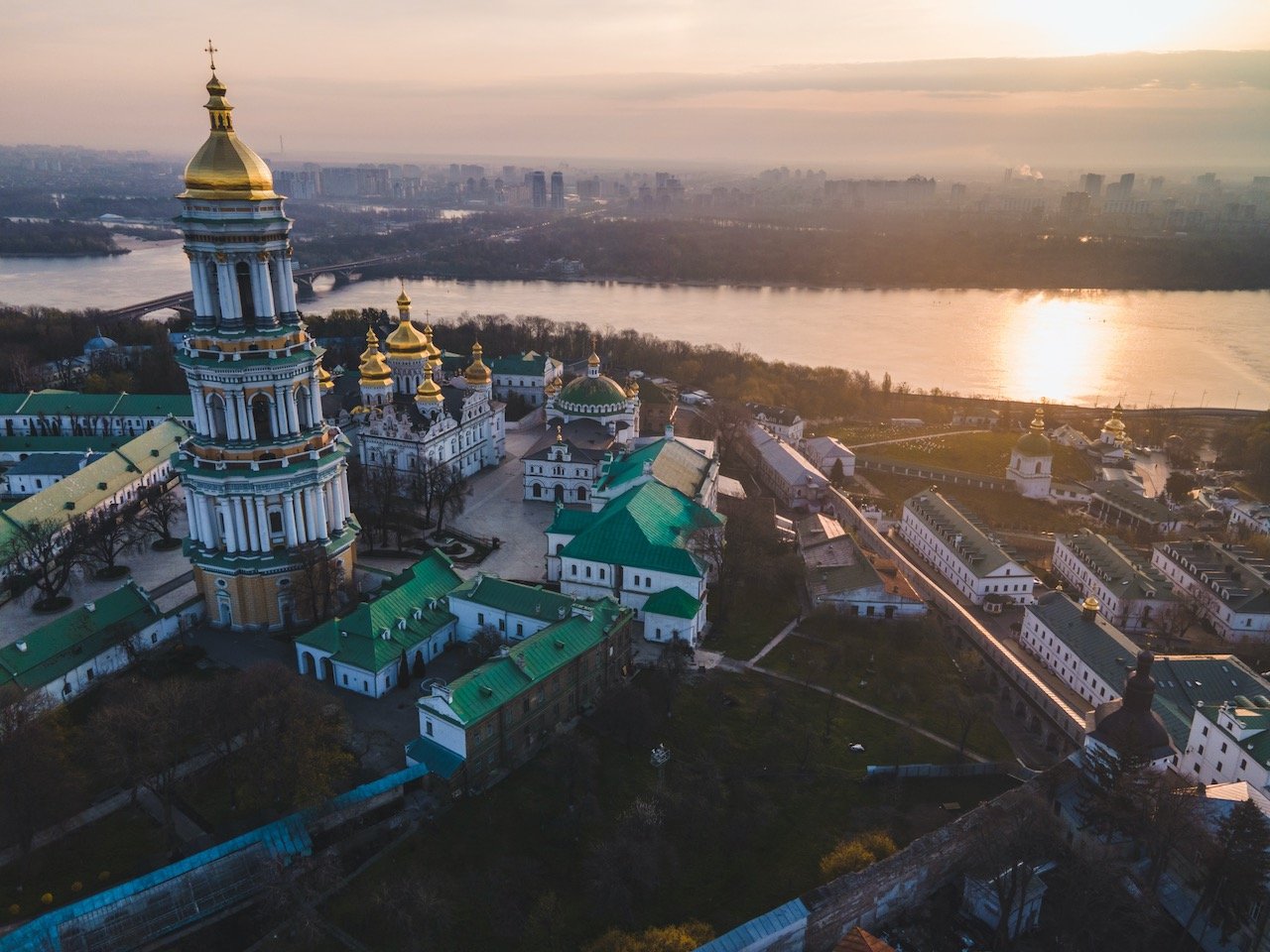
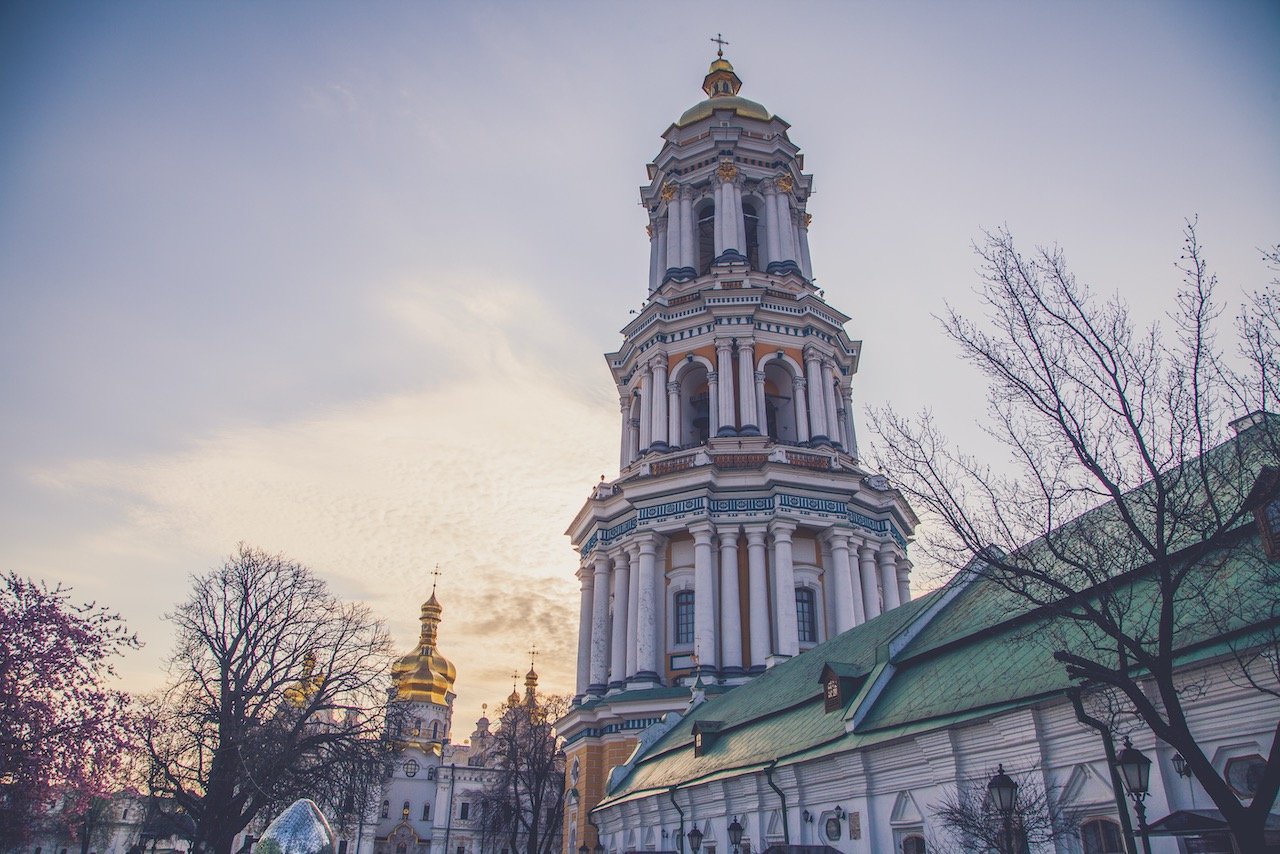
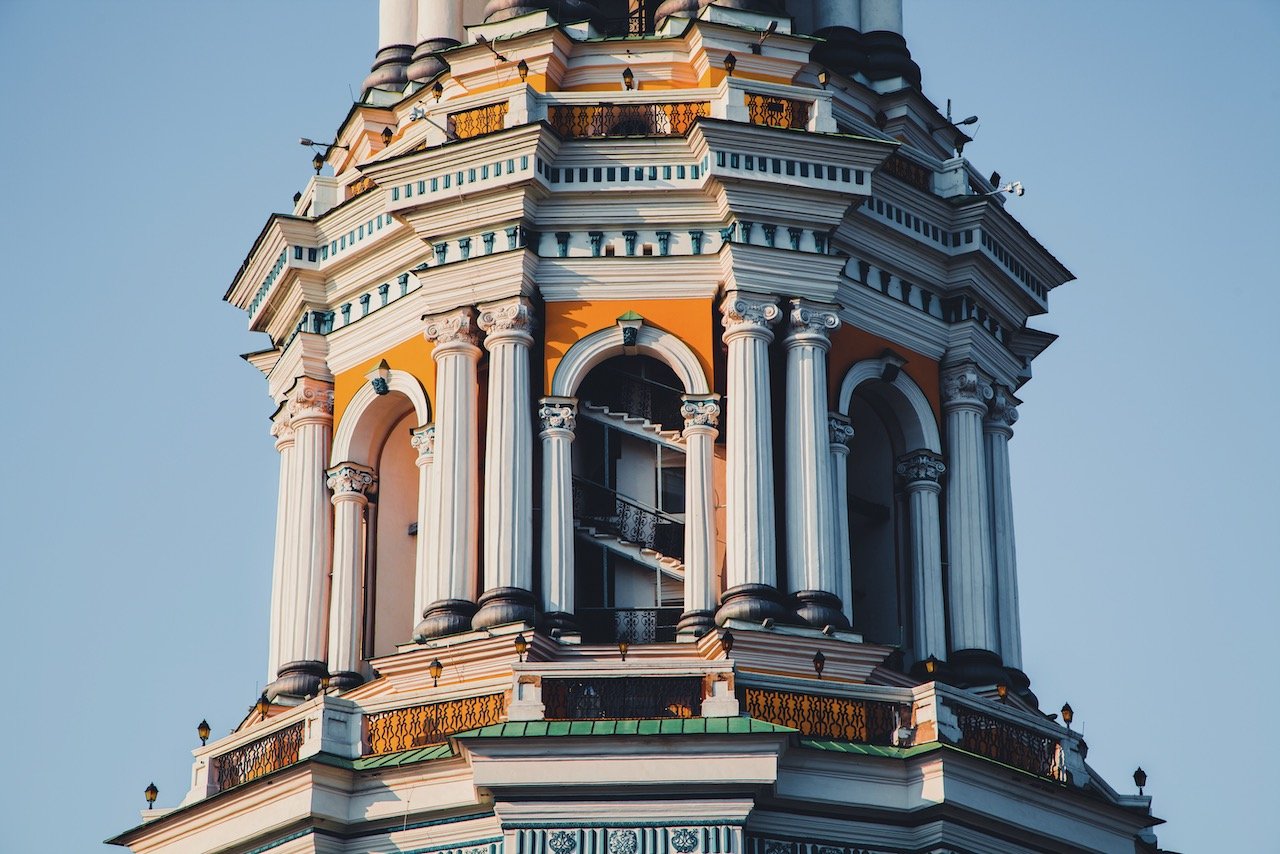
Kiev Pechersk Lavra (Kiev Monastery of the Caves), is a complex situated just north of the Motherland Monument. First established in 1051, it is considered the center of Eastern Orthodox Christianity in Eastern Europe. It is composed of several buildings, most containing the iconic golden dome architectural feature. The cave system in the complex is dispersed across various living quarters and underground chapels. My most favorite structure was the Great Lavra Belltower, incredibly ornate and colorful, it is the main feature of the complex.
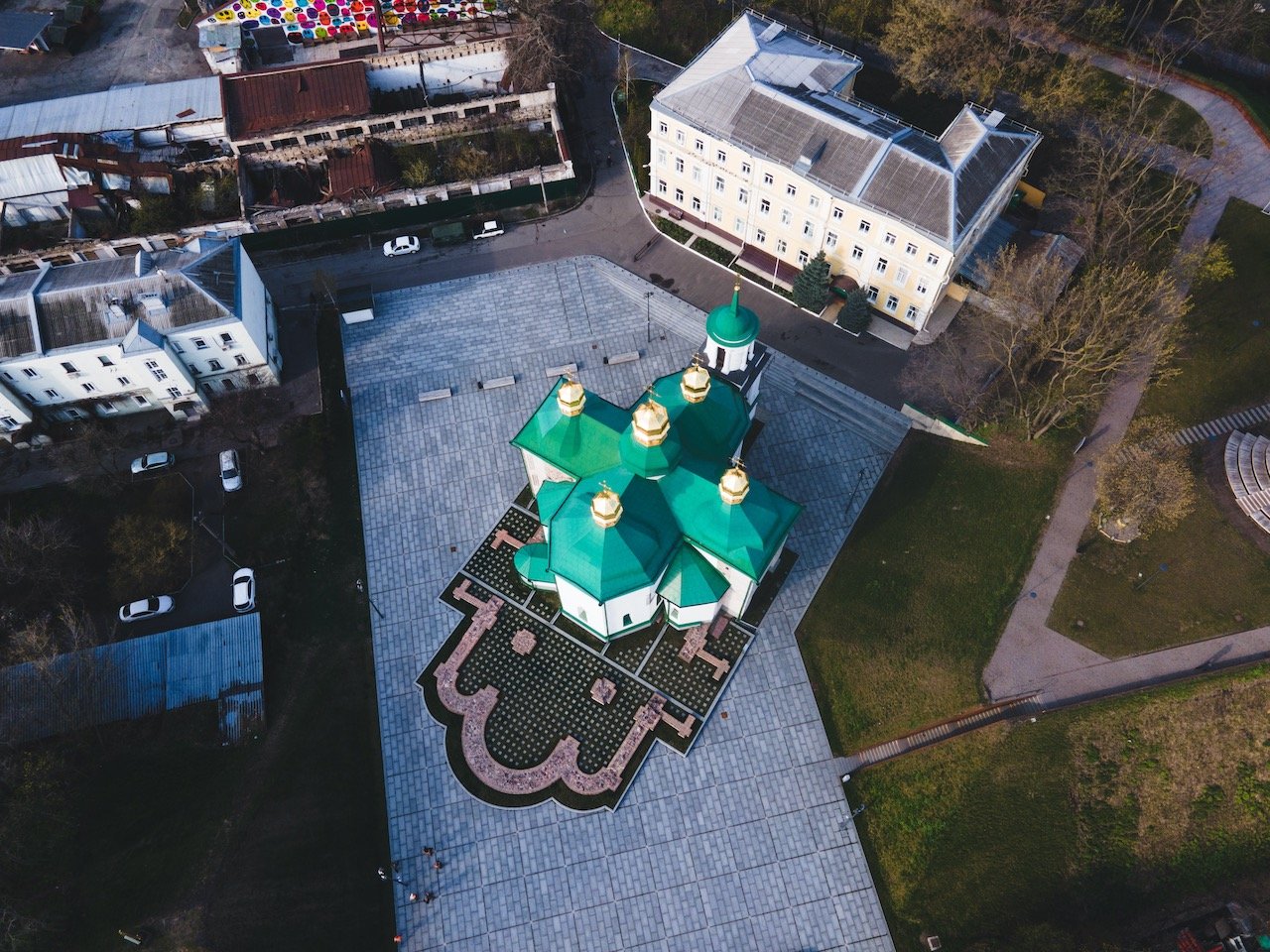

The National Museum of the Holodomor-Genocide is a moving site that describes the Great famine or the Terror-famine in 1932-1933 carried out by the Soviet government against millions of Ukrainians. Estimates of up to 12 million deaths have been published and one such theory as to why it was carried out was because Joseph Stalin wanted to eliminate Ukrainian Independence movements. The term ‘genocide’ is used here to describe the mass murder that occurred through famine.
Mariyinsky Palace is like the White House of Ukraine. The President of Ukraine lives there and it is recognizable by its light mint colored Baroque facade. It is located in a park of the same name and is open to tours at certain times of the day.
St. Michael's Golden-Domed Monastery was one of my favorite places on my first day in Kiev (that title changed on the second day). I really liked how the vibrant blue color, contrasting perfectly with the golden domes, not to mention the impending gloomy weather making for some dark cloudscapes. Built in the middle ages, the monastery’s exterior façade is considered Ukrainian Baroque, while the interior is Byzantine. Unfortunately, the building was razed in the 1930s by the Soviets but was rebuilt in 199 following Ukrainian independence in 1991.
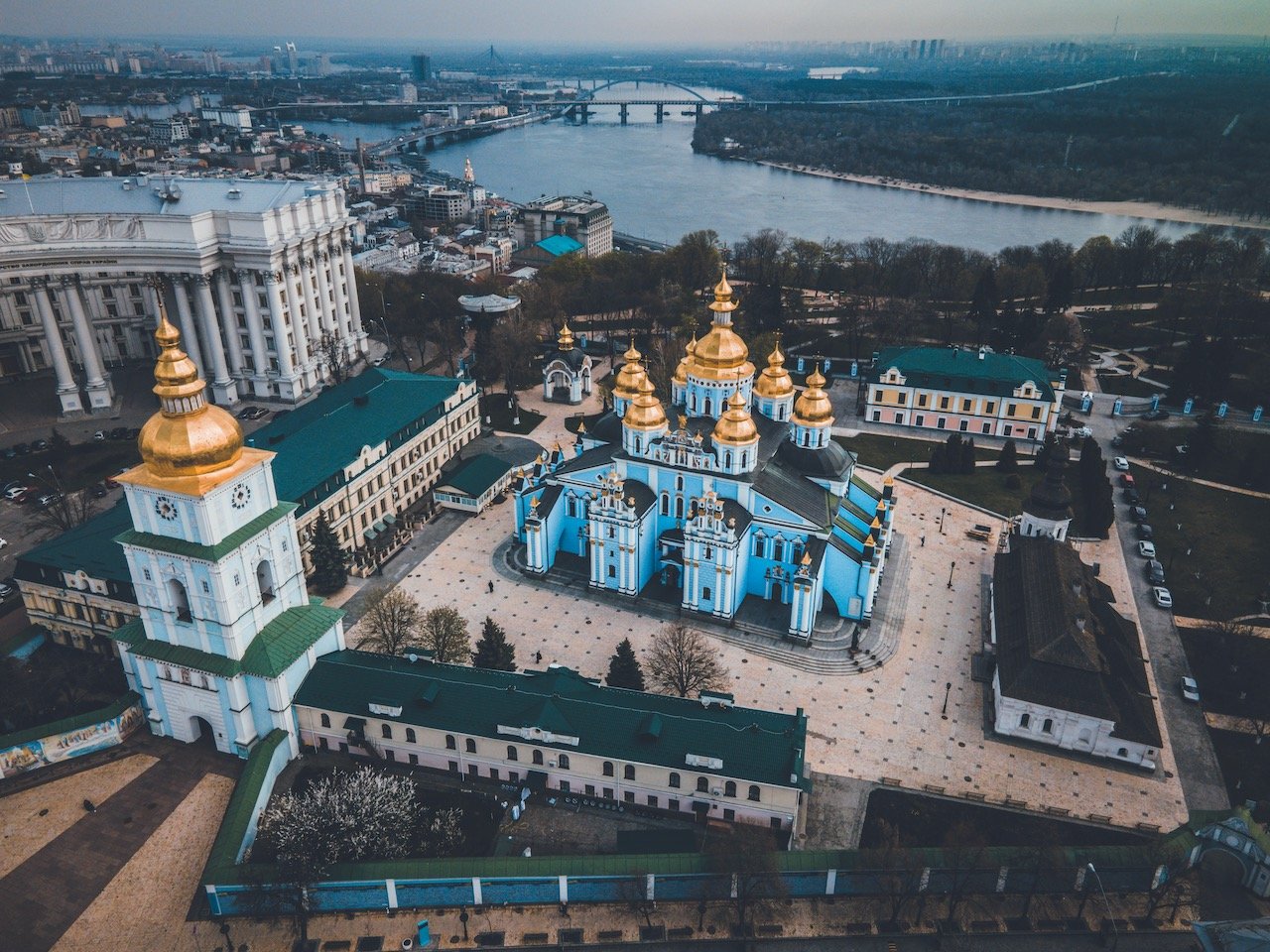
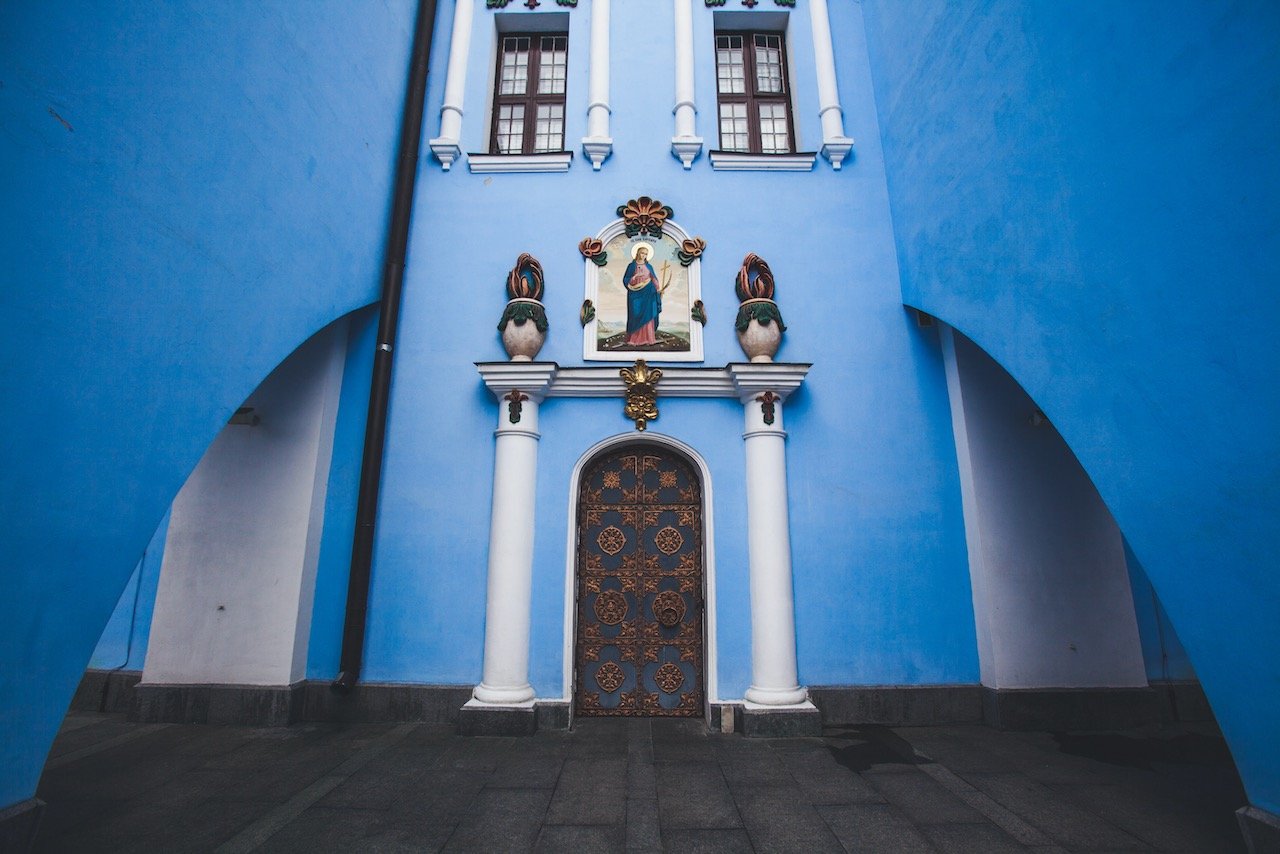

Maidan Nezalezhnosti (or just Independence Square) is centrally located in Kiev and has had many different names over the years. It is often the setting for many political demonstrations and has its own storied history of conflict and incidents. You can’t walk through Kiev without going through the square.
At this point, I realized there really was no shortage of graceful and elegant cathedrals in Kiev. Enter: St. Sophia’s Cathedral, adorned in a bright white and green exterior, and of course with golden domes. You can see this cathedral from the street as well as its corresponding bell tower. Access to the property requires a ticket, but the grounds feature pristine gardens and a comfortable space to chill out. Along with the Kiev Cave complex, this landmark was the first to have UNESCO heritage site status in Ukraine. It was named after the church/mosque/modern day museum Hagia Sophia in Istanbul (Constantinople) and was the burial place of previous Ukrainian rulers.
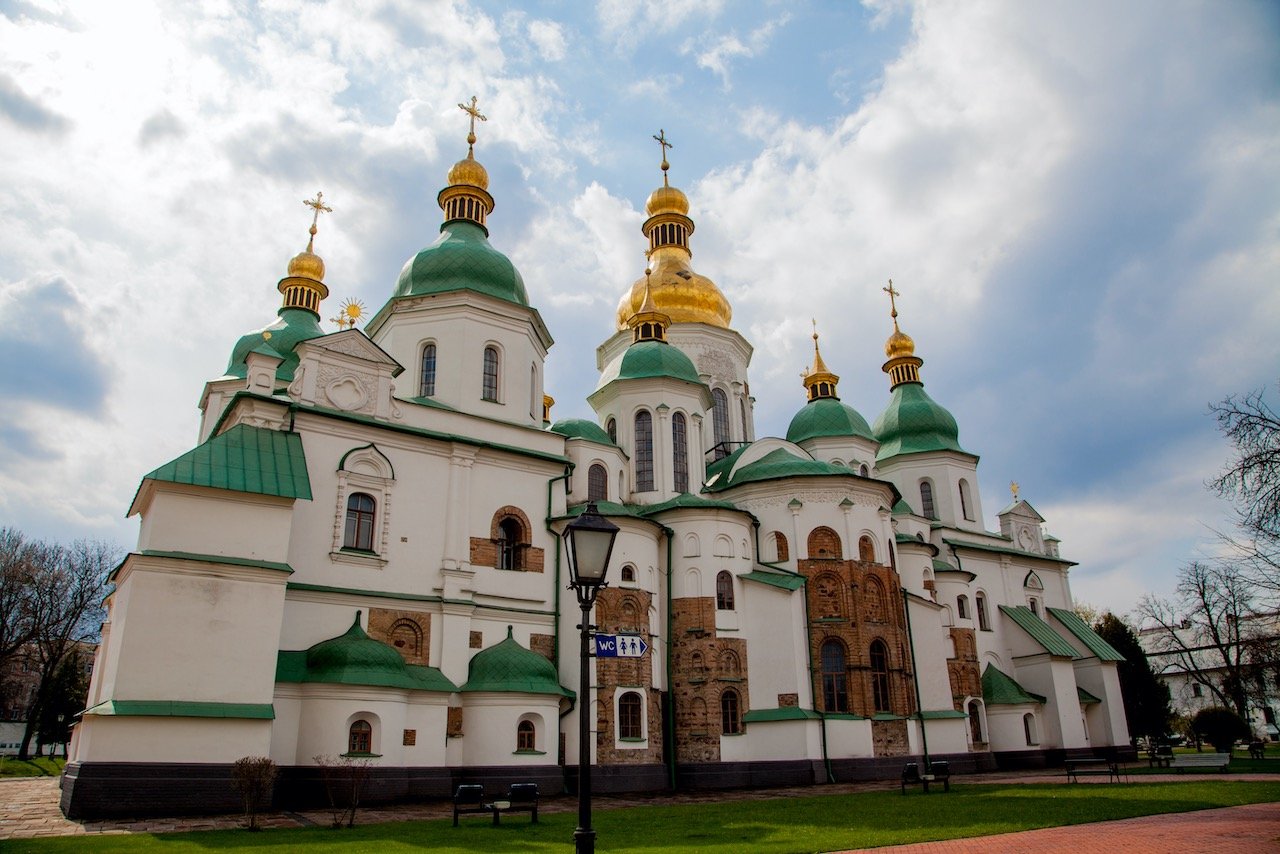
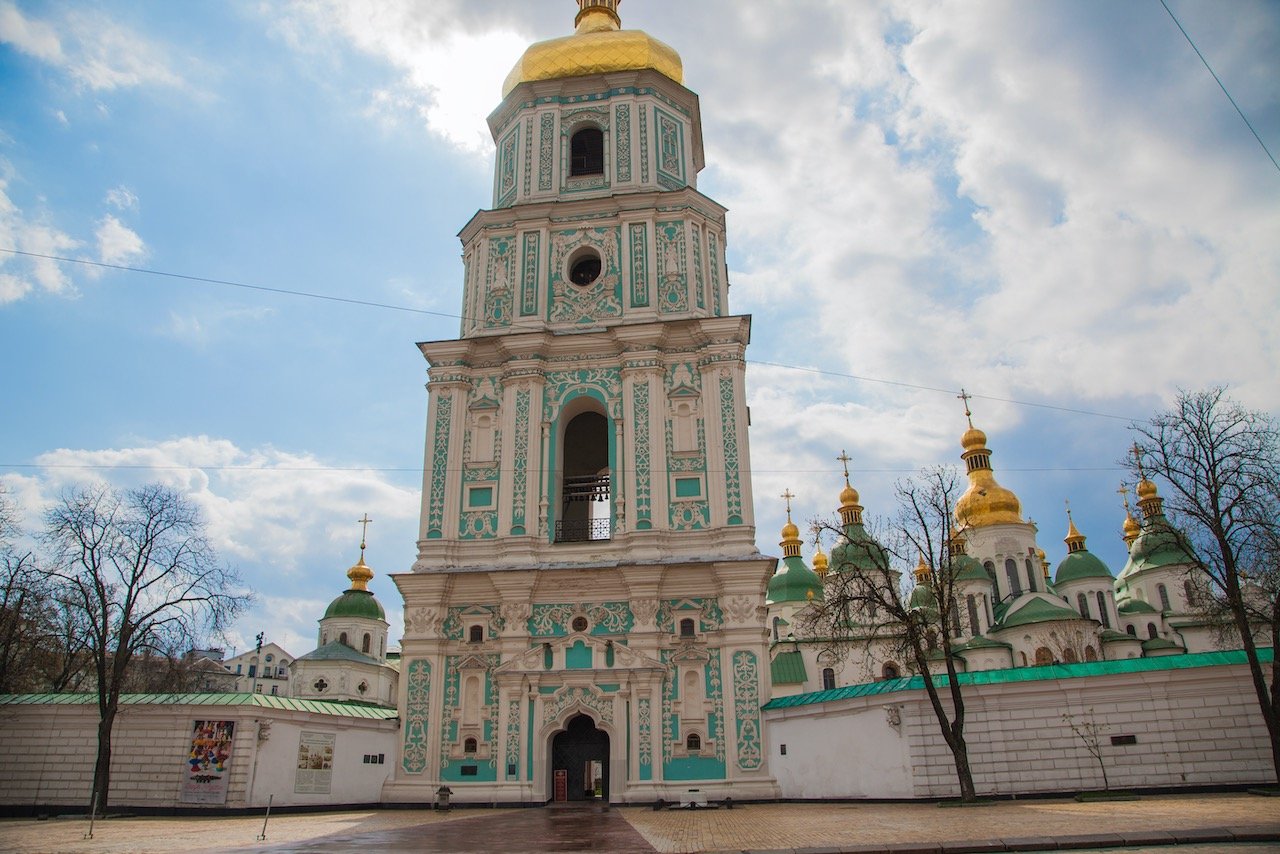
This has got to be one of my favorite cathedrals I have ever seen. Meet St. Volodymyr's Cathedral. I am usually not a fan of yellow, but this canary yellow construction is aces. Not only that, but the dark blue domes with golden stars are absolutely lit. This is the ‘mother cathedral’ of the Ukrainian Orthodox church. The interior is just as stunning as the exterior as it was decorated by masters from Venice. As there are still services at this cathedal, best to keep quiet and admire it in silence so as not to disturb the worshippers.
The Taras Shevchenko Park sits adjacent to the Kiev National University main building. It is named after the Ukrainian poet Taras Shevchenko, who is honored with a monument in the park as well. This is a popular place for students and locals on warm weather days.
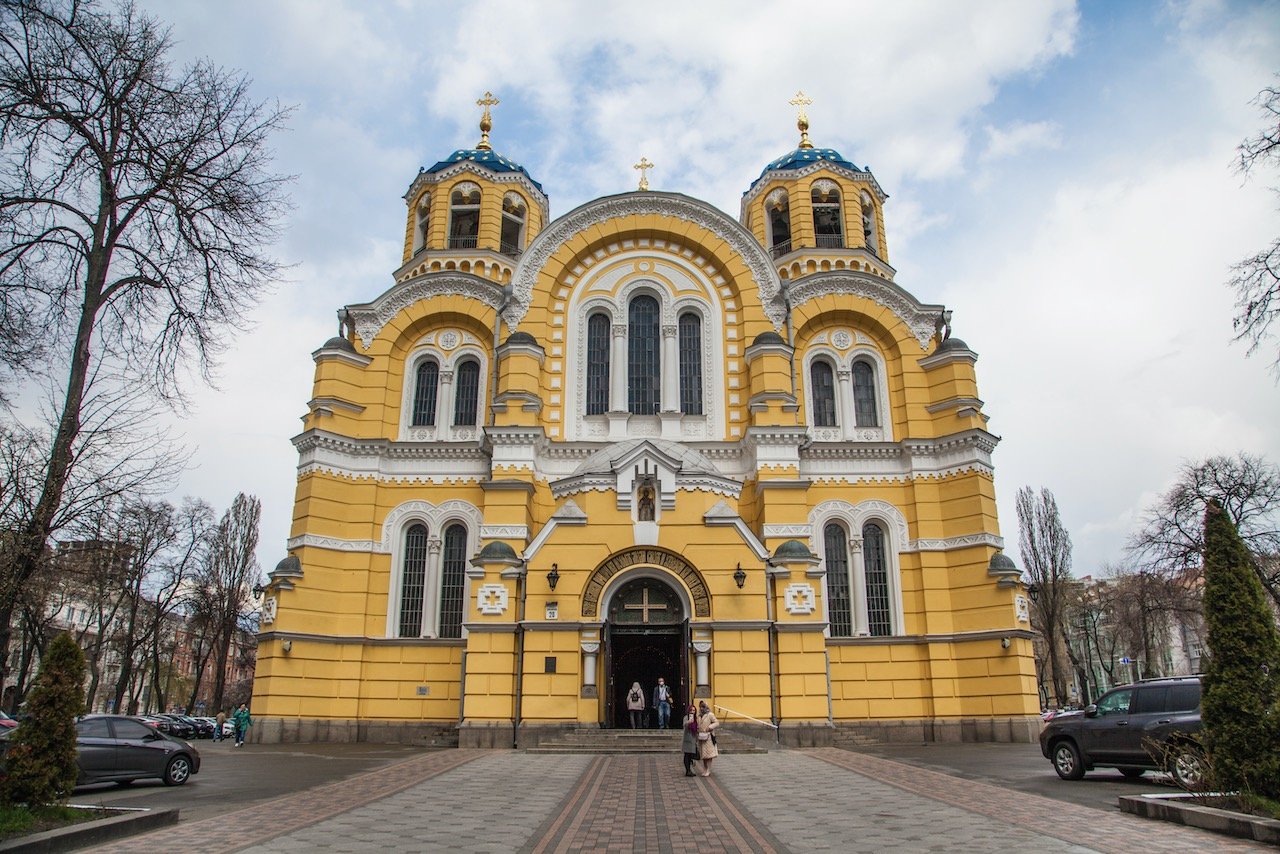
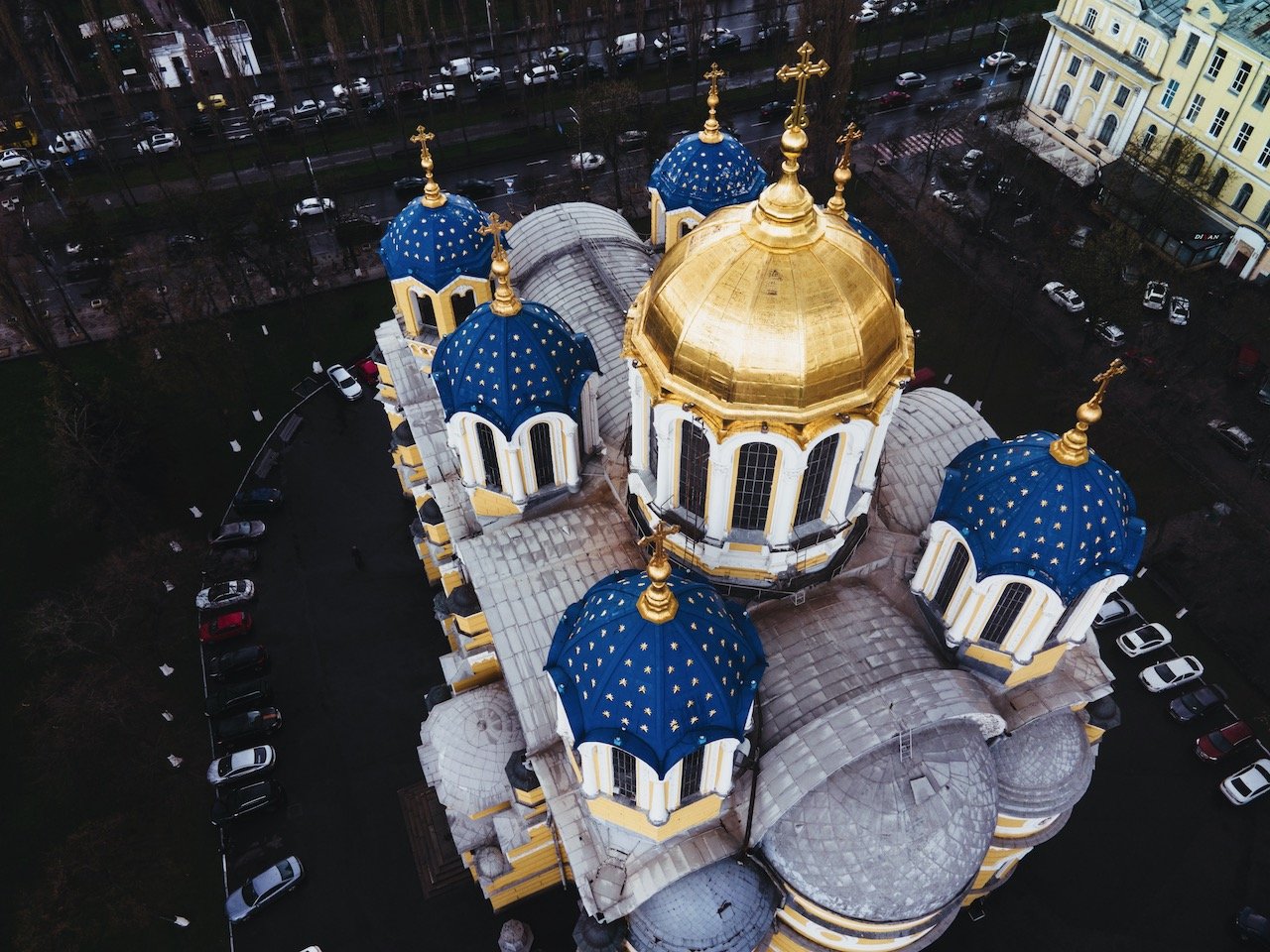
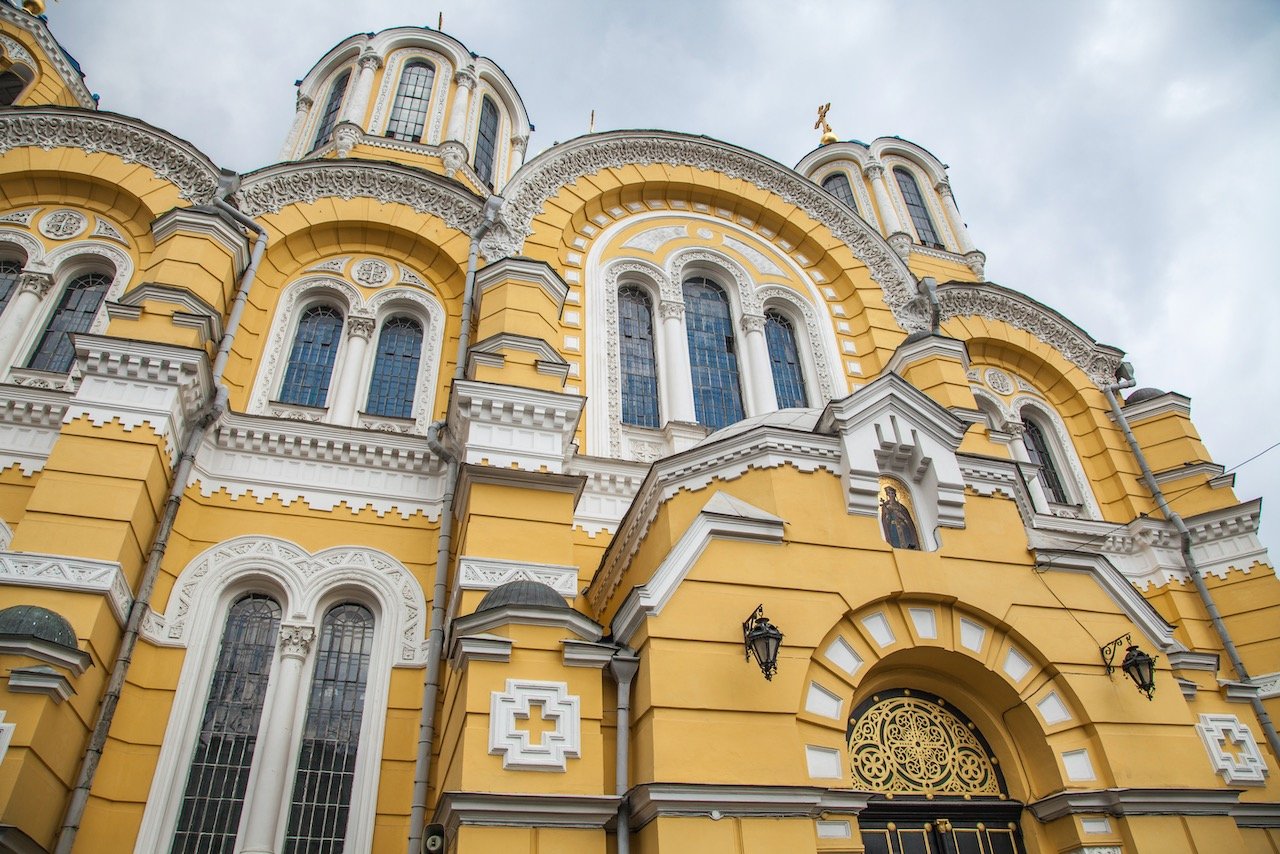
M. M. Hryshko National Botanical Garden is a garden owned by the National Academy of Sciences of Ukraine. It is named after the Soviet botanist Mykola Hryshko. The garden was founded in 1936 and covers 120 hectares with approximately 13,000 types of trees. The Botanical garden sits South of the Motherland Monument next to the Dnieper river.
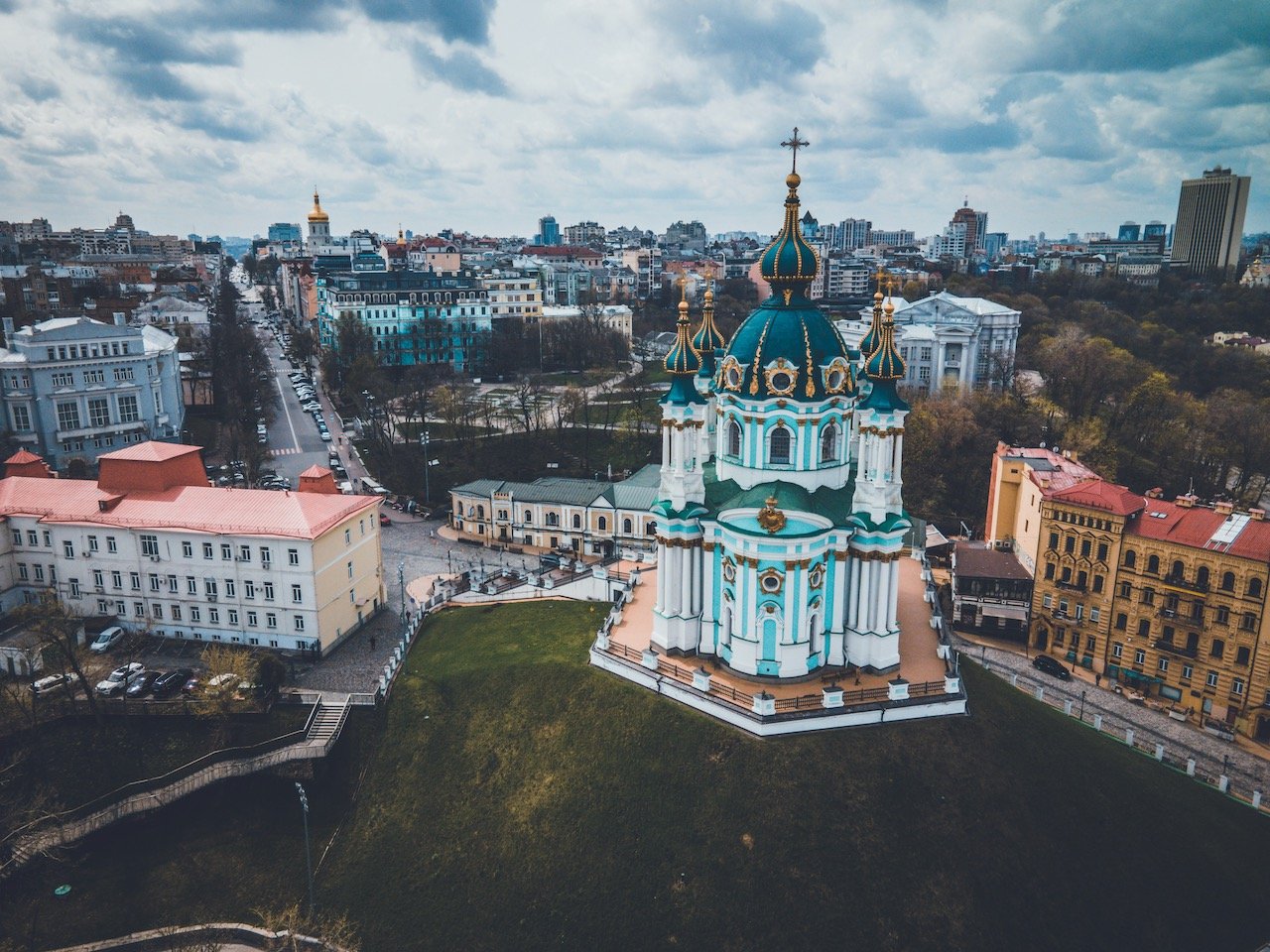
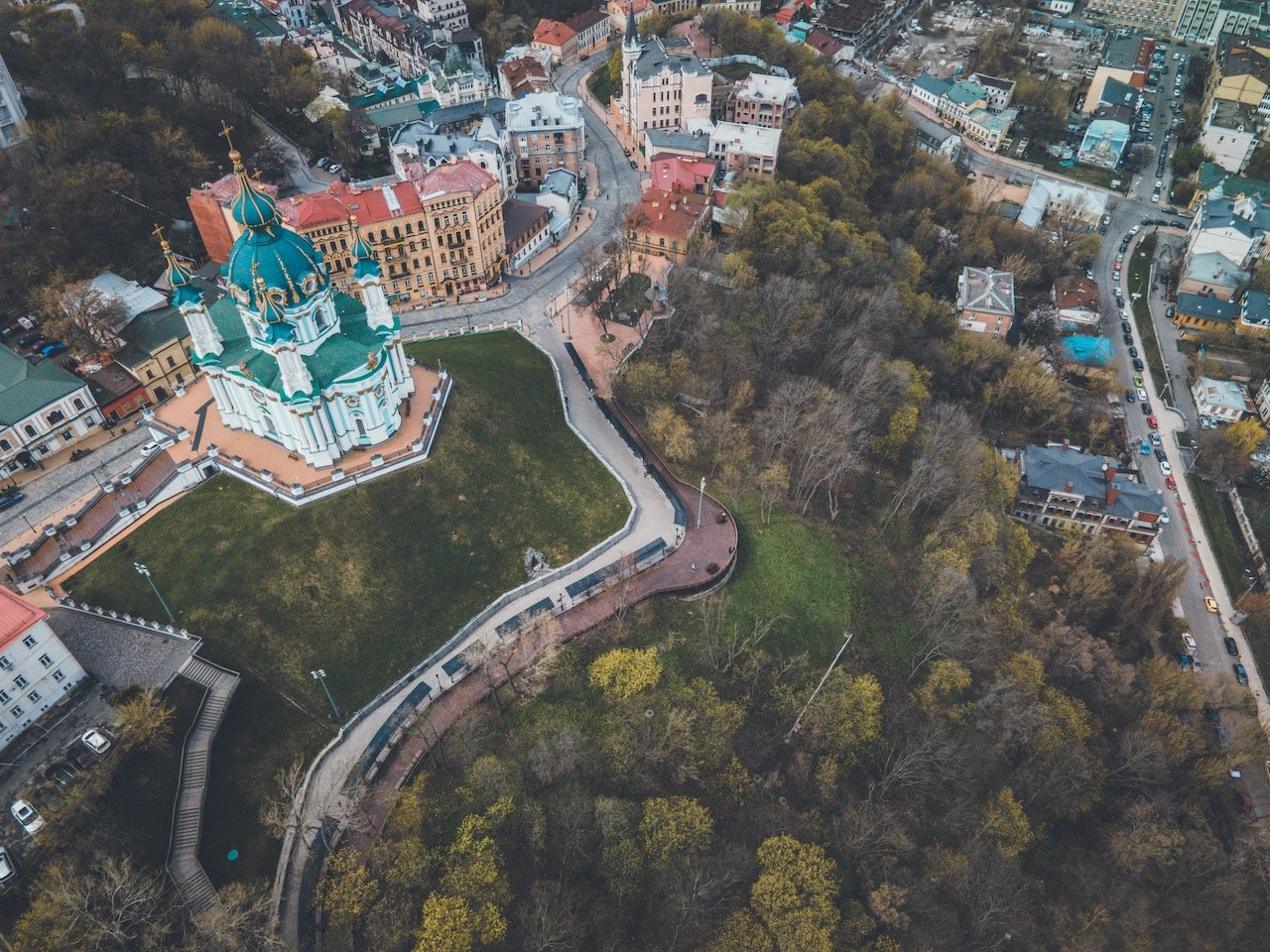
St. Andrew's Church possesses a brilliant turquoise-colored façade. I guess with how many churches and cathedrals there are in Kiev, it is easiest to keep track of them by what their exterior colors are:
YELLOW - St. Volodymyr’s Cathedral
BLUE - St. Michael’s Monastery
GREEN - St. Sophia’s Cathedral
TURQUOISE - St. Andrew’s Church
The location of this church is pretty great real estate. The views you get of Kiev from the balcony are unbeatable (though a small fee is required to access it). It was built in the mid-18th century by the Italian architect Bartolomeo Rastrelli in a Baroque style.
This church is located atop an area called Andriivs'kyi descent, described for the sloped topography of the nearby road. On a walking path just below the church were several Ukrainian artists selling their stunning pieces of art as well. Due to the steep nature of the roads here, buildings were only erected in the 17th century at the earliest. Improvements were then made over the years to accommodate horse and carriages.

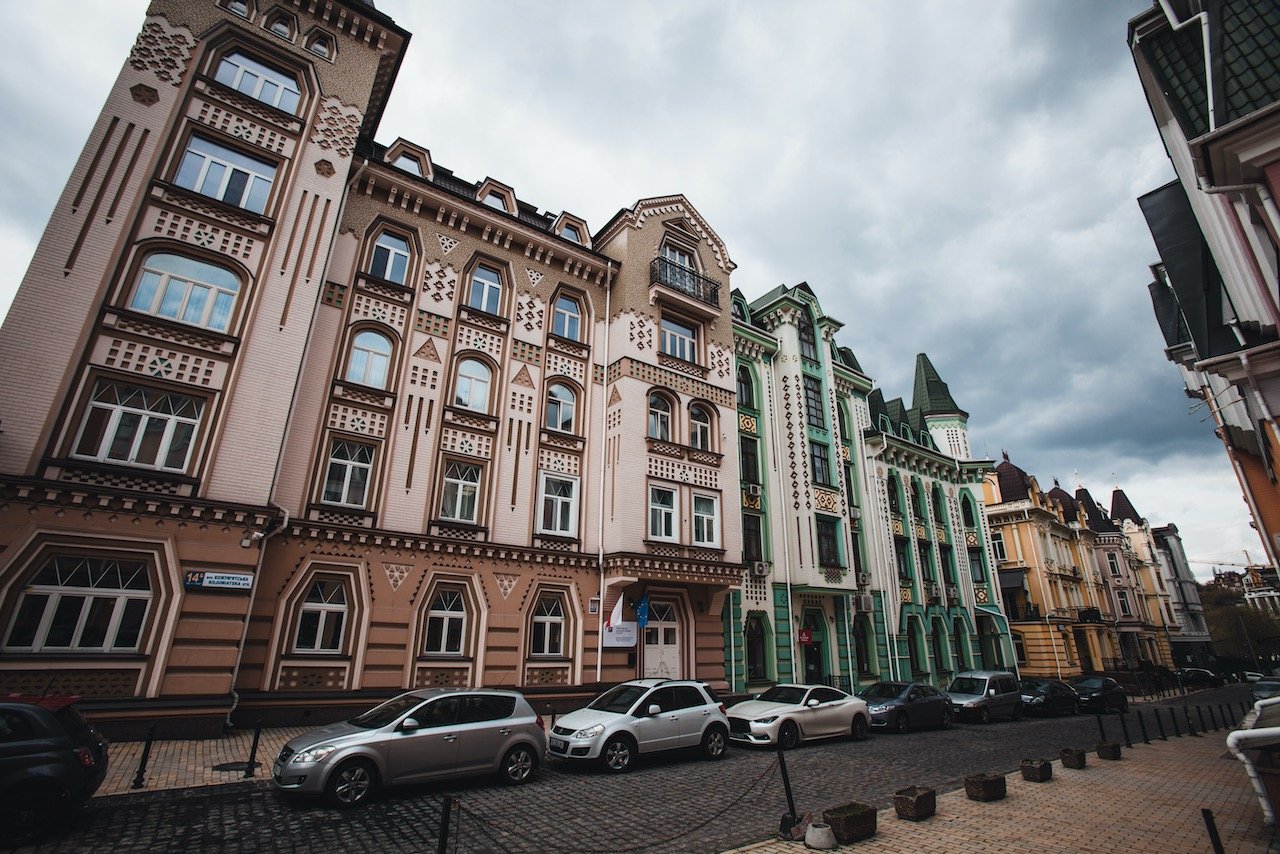
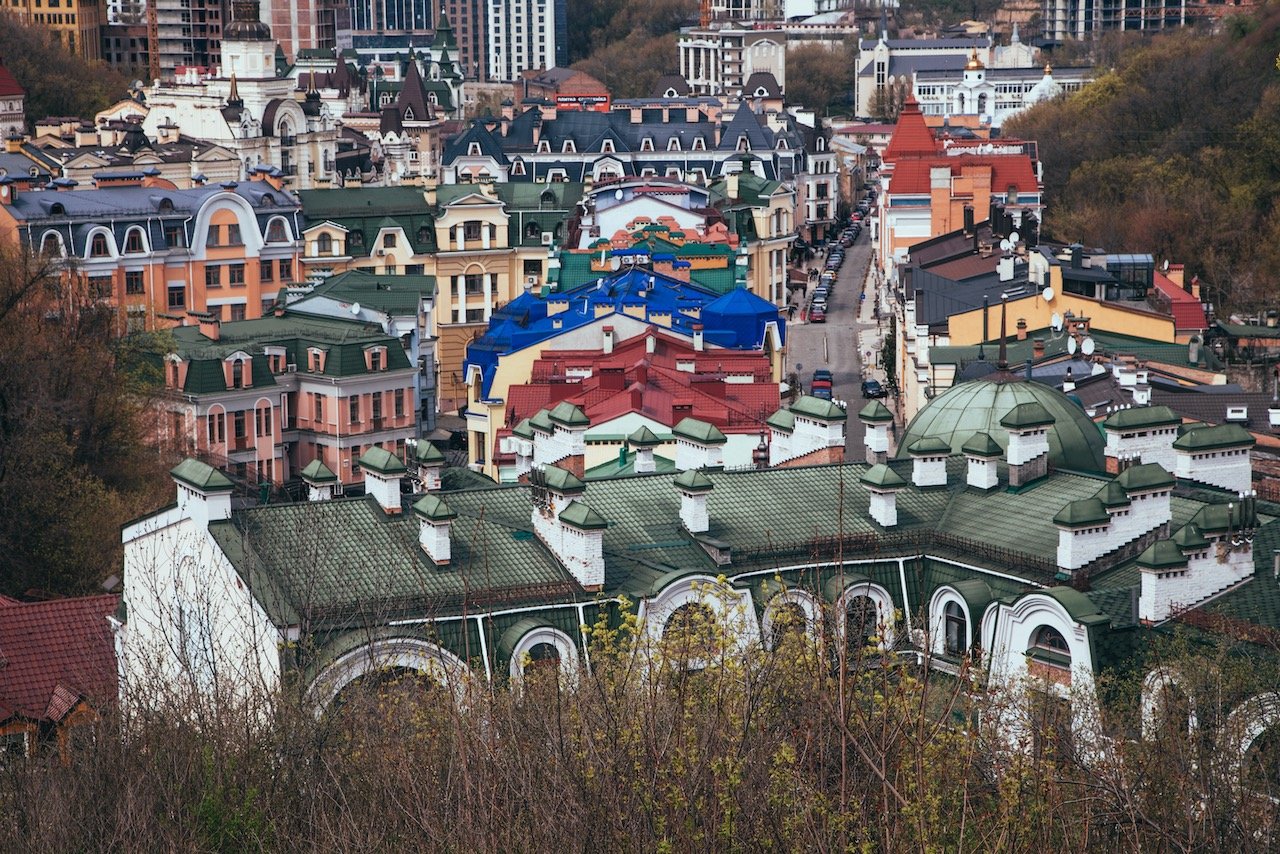
As far as posh and edgy neighborhoods go, you can find this in Vozdvyzhenka Barrio. Just a short walk from St. Andrew’s. You will know you’re here when you see the gorgeous buildings and cobblestoned streets. This area is being built up even more and is also where several embassies are located.
On an afternoon walk here, I followed my nose to the smells of brown sugar and melted butter and found Pyrizhkova Titka Klara, a bakery/café with the best cinnamon rolls in all of Kiev/Ukraine. If you’re in the area, do not miss a trip here. (I also found that Honey Cafe-Confectionary in the city center was also an awesome place to try some dessert treats, highly recommend!)
Around this neighborhood is also a cool view point over Vozdvyzhenka Barrio at Castle Hill. The path to get there was off of Andriivs'kyi descent and several flights of stairs later, I was in a large forest area in the middle of the city. I really enjoyed Kiev for these little nature patches that seem to be dotted all over the city. I love the feeling of being in nature, while still being in the middle of a city (my favorite place for this is at Suomenlinna in Helsinki, Finland).
